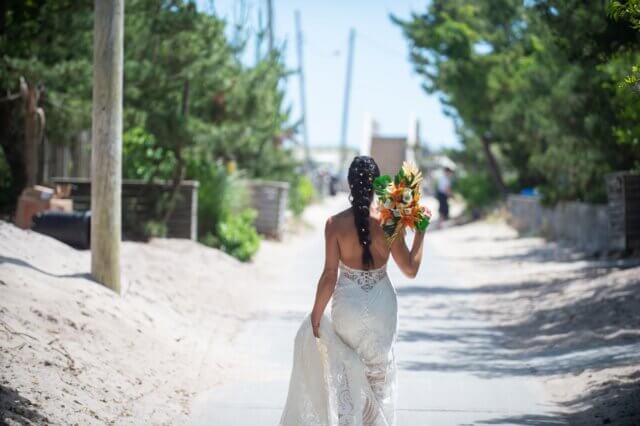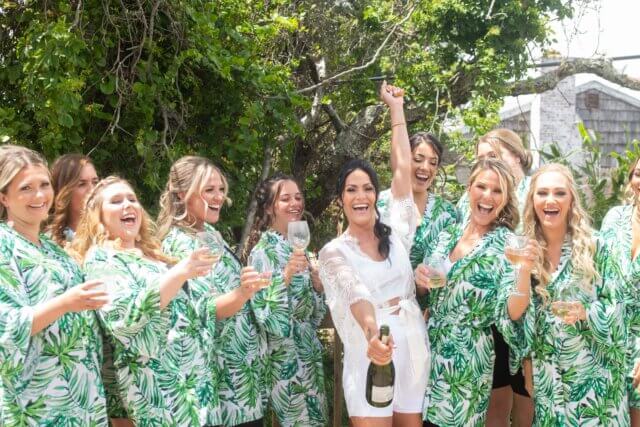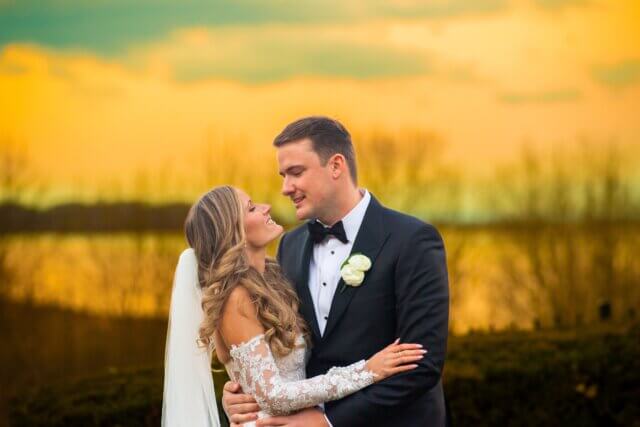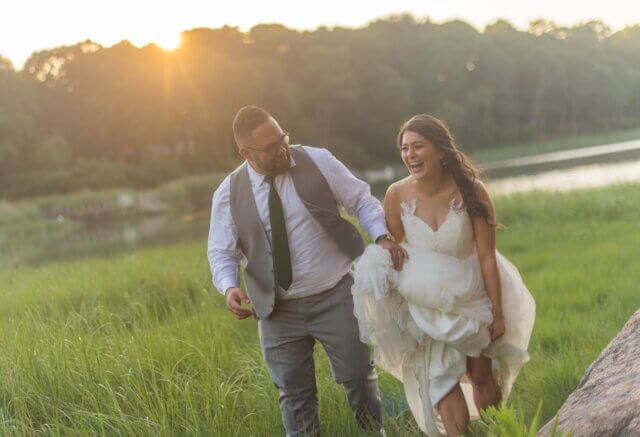Andrew Theodorakis, owner of BOLI Preferred Vendor Yellow House Images, believes change is on the horizon. Here’s why.

Image courtesy of Yellow House Images
“Your wedding photographer is the most important vendor you’ll hire.” It’s a common refrain heard from countless former brides and for good reason – once the vows have been said and the party has been thrown, your pictures will be one of the only tangible ways to remember all those beautiful moments from your big day.
While it’s of the utmost importance in 2023, one BOLI Preferred Vendor thinks pictures alone are not enough. Trends are moving in a direction where reels and videos are just as important to share as traditional wedding photography. Not only that – with the right wedding photographers who are well-versed in both shooting photos and videos, still images can be taken directly from the videos themselves. This may mean hiring one less vendor for your wedding.
Finding the right wedding photographer that can create gorgeous, emotional still imagery while also mastering the nuances of filmmaking is difficult. But it’s Yellow House’s bread and butter.
Andrew Theodorakis, owner of Yellow House Images, believes that photography plus videography is the wave of the future. With more than fifty combined years of experience, his team’s expertise in the current technological advancements of both photography and videography translates to more benefit for the investment.

Image courtesy of Yellow House Images
“All my videos look different because each wedding is different.”
As a Pulitzer Prize-nominated photographer with an extensive background in journalism, Andrew’s main focus is to document without intrusion. “If you watch a good documentary, it’s very cinematic and emotional because people feel natural,” he explained. “If you want that ‘big budget cinema’ look, you can do that, but that’s a big project – there’s giant tripods in the aisles, there’s cameras and lights in people’s faces. And the thing is, every single one of those videos look the same. All my videos look different because each wedding is different.”
That photojournalistic style requires a strong sense of empathy from the professionals behind the lens. “We’re with you for 14 hours on your wedding day, so you have to have enough self-awareness to read rooms,” said Andrew. “My team can lay back almost as guests and make everyone comfortable, so that at the end of the night they forget that there’s someone even shooting.”
And though he recognizes that some couples may want to trade a sense of discretion for lots of photography and videography equipment, Andrew finds that most shy away from that idea. “We’re candid shooters, otherwise we’d just be a big presence in your day. You might be into that, but a lot of people come to me and don’t want video because they think I’m going to be on their dance floor with a giant light in their face. But I’m 40 yards away with a high-end telephoto lens, using natural light.”

Image courtesy of Yellow House Images
“You can’t get photography alone. That’s not the future, I don’t think.”
Along with their low-profile approach, Yellow House Images also prides itself on chronicling your day with a unique combination of available technologies. “The way I do things is kind of a hybrid plan – a little state-of-the-art,” Andrew described. “I use 8K cameras that can shoot videos and photos at the same time. With 8K, the resolution’s so high that you can pull stills from the video that are good enough to blow up to an 11×24 image.”
“The way I see it in the near future, everyone is shooting video and I’m pulling the still images from their video,” he theorized. “I’m doing it for people now, as a backup. I’m not shooting with the intent to take a still, but sometimes I catch a moment on video and that split second I can turn into a photo. When everyone starts shooting in 10K, I might have one sole photographer that’s there to just give direction.”
What does that mean for the industry in the years ahead? “You’ve got to be doing both now,” Andrew surmised. “You can’t get photography alone. That’s not the future, I don’t think.”
“You’ve got a one-stop shop.”
Andrew laid out distinct advantages to a photography-videography fusion. “You’ve got a one-stop shop. You don’t have to deal with two vendors. If you’ve hired two people with two different styles – and I’ve been in those situations – it’s not easy. One of your things gets compromised.”
In fact, Andrew is so confident in this eventual shift of procedure that it has impacted his hiring process. “Every person I hire now has to shoot photography and video,” he said. “But I’ll teach photographers video because if you know photography, you don’t need to learn much for video besides holding the shot. Everyone who was a photographer initially I was able to train within a year or two at least. And then we’re not getting in each other’s way.”
Another advantage? Price. “Right now, I sit at about the average for both photography and videography,” Andrew detailed. “I actually make my prices a little lower for each, for the incentive that you’ll book them together. So no, you’re not necessarily going to get a better deal if you book them separately.”

Image courtesy of Yellow House Images
